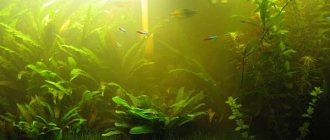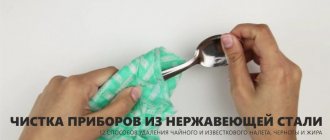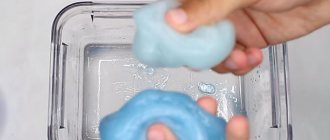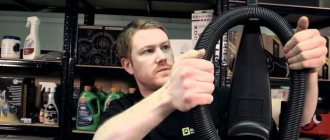Beautifully designed aquariums enliven any interior. Slowly swimming colorful fish in bright greenery calm you down after a busy day and distract you from pressing problems. But, like other living creatures, fish require care, namely, thorough cleaning of their habitat. After all, you must admit that even the most exquisite, rare species of fish will lose their attractiveness in the cloudy walls of the aquarium.
Experienced aquarists know many secrets of caring for their living area, and maintaining cleanliness does not take much effort and time from them. But what if you also decide to join their number, but have absolutely no experience in this? In this article we will show you how to clean an aquarium from limescale at home.
DIY home aquarium cleaning
The basic rule is to never empty the entire aquarium. Once a week we should replace approximately 30% of the water.
- Do not pour fresh water directly from the tap, as chlorine can negatively affect the fish.
- A few days before cleaning the aquarium, drain the water into a container and let it settle, then pour this water into the container.
Before we start cleaning the aquarium, we will prepare two dishes - one for transplanting the fish during cleaning, and the other for placing decorative elements there. You will also need a container for the water that we pour out of the aquarium.
The filter cartridge must be washed with the same water that was poured when cleaning the bottom. This way, the filter will retain bacteria that fight algae and ensure the appropriate pH of the water.
Before adding new water, clean the bottom of the aquarium from debris and other contaminants, preferably using a desilter. It draws in dirt and holds the bedding in place.
How to clean the walls of an aquarium and what products to use
However, even the most prudent aquarists cannot avoid the need to regularly remove plaque. For this purpose, there are three main methods, which include the use of special or folk remedies and mechanical cleaning.
Special means
This category includes specially developed cleaning compounds. These can be impregnated wipes, sprays or solutions. They allow you to clean without harming flora and fauna. To this list you need to add softeners, which allow you to remove traces of calcium without replanting the inhabitants and draining the water. An example of such means is:
- Tetratec is a set of wipes impregnated with components that dissolve lime and green deposits;
- Aquarium Pharmaceuticals Safe and Easy, spray for cleaning glass and acrylic surfaces from traces of calcification;
- Aquayer, one of the softeners, when placed in the filter neutralizes calcium salts, reduces the level of hardness, is not recommended for long-term use, after 45 minutes it should be removed from the filter.
The first two options require completely emptying the container. After draining and replanting the fish and plants, the walls of the container are treated with the selected product, left for a few minutes, then the chemicals along with any remaining contaminants are washed off with running water.
Important! Despite the advertised safety of special compounds, after treating the internal cavity with them, the remaining substances must be completely washed off. Its accumulation can harm aquarium inhabitants.
Folk remedies
If special chemicals are not available, there is always the option of using cleaners prepared at home from improvised materials. The most popular products for decalcification remain acid-rich lemon and vinegar, to which ammonia is often added:
- instead of fresh lemon, citric acid is often used, it is also effective against calcium deposits; to prepare a solution, 20 grams of the substance are diluted in a glass of water and stirred until completely dissolved;
- vinegar, composition similar to 200 grams of water, tablespoon of product with 9% concentration, for application you can use a spray bottle or a clean cloth;
- ammonia, alcohol is diluted in a ratio of 1:10 and mixed thoroughly, the application procedure is the same;
- Another effective folk option is the use of peroxide, the substance is diluted in a ratio of 30 ml per 100 water.
The application procedure differs little from that described above. Since all compositions are prepared in the form of liquid solutions for application, it is most convenient to use spray bottles.
Important! Some types of household cleaners can be a burn hazard; for example, when working with vinegar-based solutions, it is recommended to protect your hands with gloves.
Algae and their care
Sooner or later, algae grows in every aquarium. They can overproduce if there are too many nutrients in the aquarium. and even if it is algae that cleans the aquarium, an excess can ruin all the beauty and cause an imbalance of oxygen and carbon dioxide.
To remove them, you can use ultraviolet lamps, the light of which kills parasites, bacteria and algae (but only those that float in the water). Excess green sludge can also be controlled by introducing fish to clean the tank.
In addition to the “green” on the glass, it is necessary to periodically clean the aquarium from white deposits. We remove it with a regular school triangle, which will serve as a scraper, and clean the remains with a cotton swab dipped in a drop of vinegar.
Why is plaque on the walls harmful?
Green deposits in a home pond do not pose any danger to its inhabitants. It simply does not look aesthetically pleasing, causing inconvenience to the owner of the aquarium. This problem occurs due to excessive growth of green algae.
A white coating appears due to a large amount of organic matter, excess food or lack of plants in the tank. It does not harm the flora and fauna of the reservoir, but is a signal that it is time to change something in the aquarium. Therefore, it is necessary to fight not with plaque, but with the cause of its occurrence.
Brown deposits on the walls appear due to the active spread of brown algae. Most often they breed in aquariums where the balance is imbalanced. To restore it, you need to:
- check and normalize the amount of nitrates and nitrites in the tank;
- clean the aquarium regularly;
- get snails.
Once balance is established in the ecosystem, the problem will solve itself.
Limescale deposits in an aquarium appear due to excessive water hardness. This indicator is considered correct from 3 to 15 mEq/l. If these standards are exceeded, the inhabitants of the artificial reservoir may become ill. They become lethargic, less mobile, and their color fades. If you rarely clean the aquarium, this will lead to the death of the fish.
The danger is not the plaque, but the reasons that caused its appearance. By eliminating them, you can create favorable living conditions for the inhabitants of the glass house.
How to effectively remove algae
First, the algae growth must be stopped. Unfortunately, simply changing the above conditions is usually not enough to kill algae.
If you omit the mechanical removal step, the situation can, paradoxically, worsen even more as conditions in the aquarium change.
- For example, imagine that you start fertilizing more, but as the plants grow better, the algae also grows better.
- This makes sense, considering that they are also plants. Therefore, it is necessary to remove algae manually and with the help of preparations over several days or weeks.
- Then the algae starts to disappear and never comes back because the fertilizer makes the plants so strong that the algae no longer has a chance to survive.
What it is?
The green coating is a colony of algae. The most common of them are protococcus (Chlorococcum), “green dust” (Green dust algae), and xenococcus (Choleochaete orbicularis). The first forms a coating only on the inside of the glass, the second - on the glass and the surface of the water, and the third - on the glass and leaves of aquarium plants.
Reference. The name “green dust” is taken not from the scientific lexicon, but from the jargon of aquarists. There is no exact data on which types of algae form such a coating.
Algae are part of the natural microflora of the aquatic environment and are always present in it. Problems appear when normal conditions are violated - algae begin to multiply too actively. More precisely, they form spores. Typically, single-celled plants reproduce by division, and this happens slowly. If the natural balance is disturbed, then one cell forms up to 32 spores, and from each a new organism appears. Reproduction is rapid in nature.
Is it dangerous?
Protococcus and “green dust” are not dangerous for fish, aquatic plants and other inhabitants of the aquarium, but they spoil the appearance of the living area. Xenococcus, which is deposited not only on the walls and surface of the water, but also on the leaves, causes harm to aquarium plants.
Parasitic algae "blackbeard"
Black and gray algae are usually found in more polluted aquariums. Most varieties of algaecides are excellent for controlling them.
The recommended dose helps keep them under control, but if you want to get rid of them, you will need twice the concentration.
- It is best to dip your hand with the product in the syringe into the algae and spray it under water.
- The filter should be turned off during this time to prevent carbon displacement.
The algae will die within a few days. A two-time short-term dose over a month will not harm even sensitive fish, but you should follow the instructions on the package.
To prevent algae from returning after removing the liquid carbon, it is necessary to reduce the number of fish so that there is no more than 1 cm of fish length per liter of aquarium water.
High-quality surface filtration will also help, which will help keep the water on the surface in constant movement. It is advisable to use a skimmer (surface filter).
It is important that sufficient oxygen enters the water.
Green filamentous algae
They look like long green "hairs" tangled in plants. It is recommended to remove such algae manually and include shrimp and other algae eaters in the aquarium's eco-system. Antibiotic-based medications will also help.
To prevent algae from returning, it is necessary to adjust the conditions in the aquarium. Filamentous algae is commonly found in brightly lit aquariums when plants are starved of nutrients (nitrogen and phosphorus) or carbon dioxide.
- Don't be afraid to add fertilizer to your aquarium flora; once the plants recover and start growing, the algae will not return.
- This is an algae that grows on the glass of an aquarium. An excellent solution in case of the appearance of this type of uninvited guest are drugs that sterilize the water, and after cleaning it will not appear again.
- When it comes to permanent aquarium conditions, it is recommended not to overfill, overfeed, have a good filter, as well as change the water and clean the surface with a skimmer.
Cleaning equipment
Glass scraper
Scrapers are needed to remove algae and plaque. The correct selection of tools is made taking into account the characteristics of the aquarium.
The most common is the magnetic scraper. It is the most convenient, allows you to collect plaque by swiping along the glass from the outside, and also does not disturb the fish. A significant disadvantage is its high cost and ineffectiveness in removing limescale.
Plaque can be cleaned with a scraper with a metal blade. When working with such scrapers, you need to be careful not to scratch the aquarium or catch the silicone sealant connecting the walls. Some models of scrapers are presented in a combined form with the ability to replace the blade and sponge with each other.
An alternative to scrubbing is the hard side of a kitchen sponge, not soaked in detergents, or special sponges from the pet store that are sure to eliminate the presence of soap and chemical residues. The soft side of the sponge can be used for general wiping. Hard-to-reach places and decor can be cleaned with a stiff-bristled toothbrush. It is undesirable to use metal tools due to the formation of rust and the danger of it getting into the fish’s esophagus.
Siphon
A soil cleaner or siphon is required to clean the substrate without removing it from the container.
There are different types of siphons. Some drain dirty water directly into the sink, eliminating the need to drain into a bucket, while others have an adapter that allows the water to pass through a filter and back into the reservoir. The principle of the siphon allows you to remove large debris, returning small particles through the filter into the aquarium.
Net
The presence of a net is important when completely changing the water in the aquarium for the safe transfer of fish. The size of the net must be appropriate so as not to damage the fins.
Bucket or bowl
A bucket is needed to collect water and debris. The material must be neutral and not form harmful substances. Inert plastic and enamel are recommended.
Additionally, you can purchase tweezers for planting plants and lifting various parts from the bottom.
Cyanobacteria
These are sticky blue-green coatings on sand and decorations. To begin with, you can vacuum them with a hose. After this procedure, you can use a remedy for cyanosis.
Their development occurs when the nitrogen/phosphorus ratio is incorrect or when there is a deficiency of one or the other. It is necessary to start changing the dosage of nitrogen fertilizers, phosphate fertilizers, or both. It depends on the specific situation; tests for phosphate and nitrates can also help.
It is important to ensure that the nitrate or phosphate levels do not drop to zero.
Aquarium care is not just about changing the water or removing algae. It also controls the water temperature.
- This is important because a damaged heater may stop heating the water or, conversely, cause the fish to “boil.”
- We also need to check if the filter is properly oxygenating the water.
- It is worth developing the habit of checking the condition of the aquarium, for example, when feeding the fish.
- Thanks to this, our colorful specimens will remain healthy, and we will be able to enjoy them without stopping.
Prevention
In order to prevent the appearance of greenery on the walls of the aquarium, follow the following recommendations:
- the duration of daylight hours is maintained at 8-10 (no more than 11) hours;
- avoid overpopulation of the reservoir and overfeeding its inhabitants;
- plant the tank with fast-growing plants;
- apply fertilizers according to the manufacturer’s instructions;
- regularly siphon the soil, clean the glass and change the water;
- maintain the pH at a high level (for example, by adding shells to the pond);
- control water temperature, filtration and aeration.











